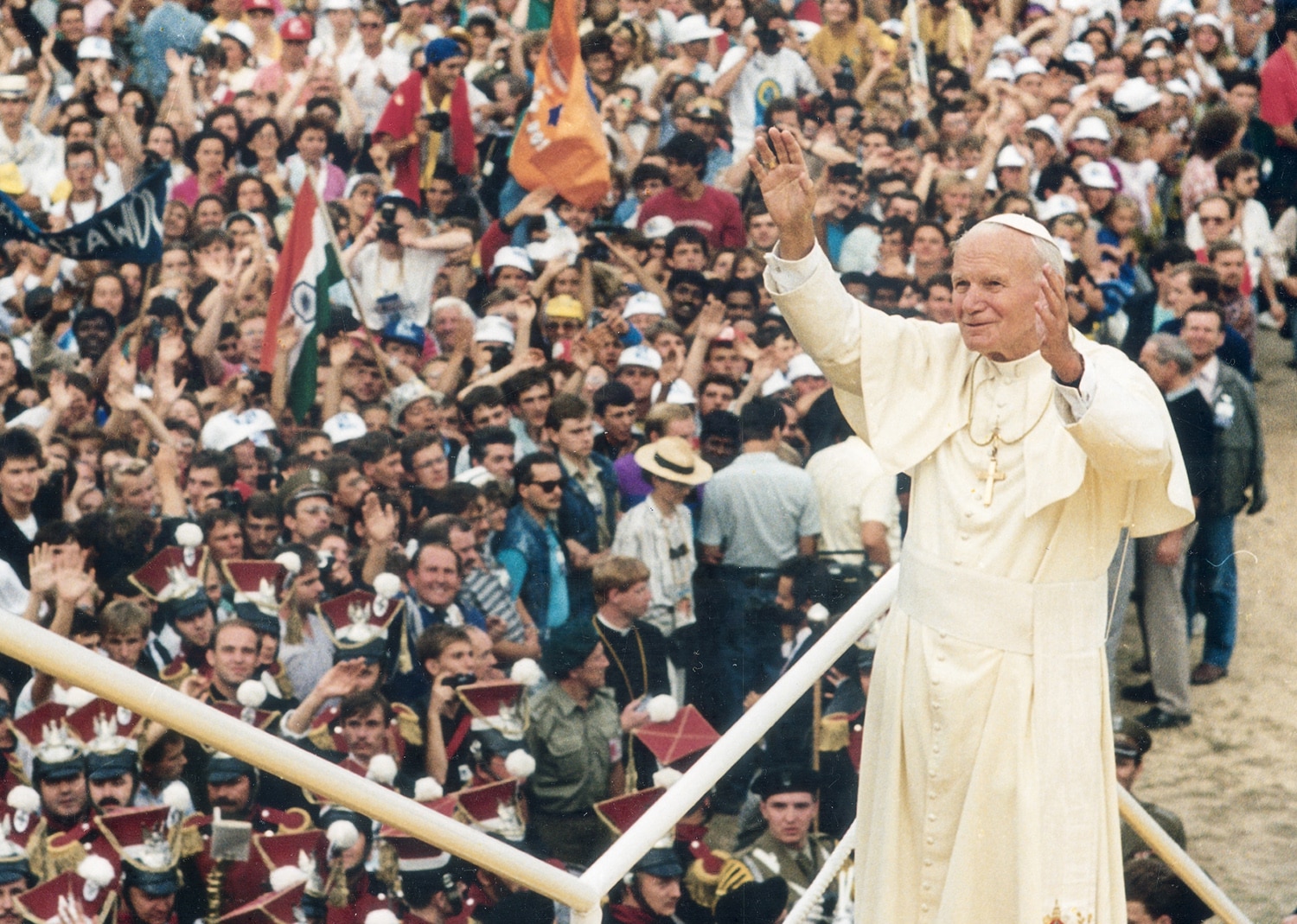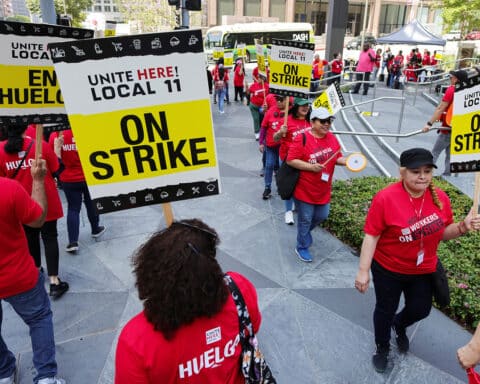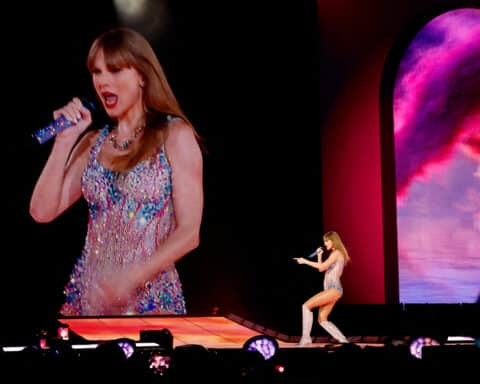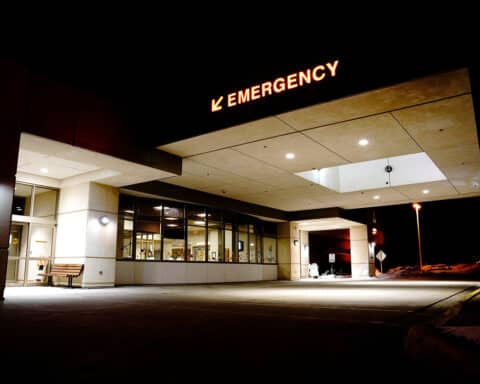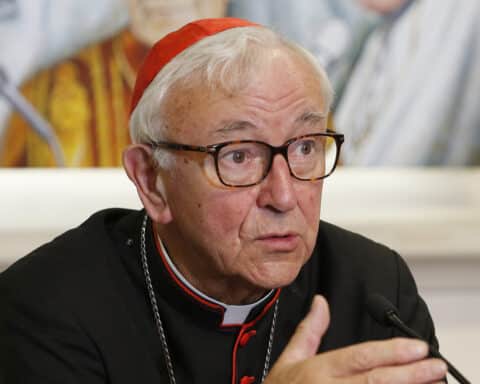HUNTINGTON, Ind. (OSV News) — Electing Cardinal Karol Wojtyla to the papacy Oct. 16, 1978, sent shock waves across the world.
In all corners of the globe, people struggled to pronounce the last name of the 58-year-old cardinal and shared the joy of electing a pope “from a faraway country” as St. John Paul II himself said from the balcony of St. Peter’s Basilica 45 years ago.
George Weigel, who became papal biographer 17 years later, was in his Seattle office when a colleague of his said, “They’ve just elected a Polish pope.”
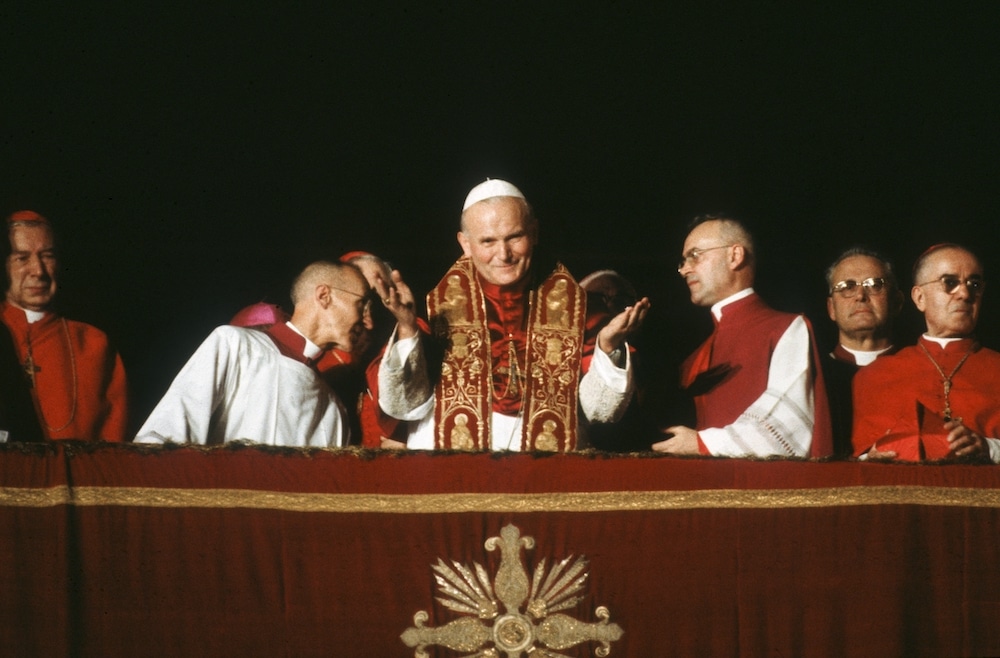
“It became clear within a week of his election that this was a man of God who was going to boldly proclaim the Gospel, and who was going to challenge the forces of atheism precisely because they were harming human beings, that the human person without God is a lesser creature, and he would make that clear, which he did for 26 and a half years,” Weigel told OSV News.
A pope that revolutionized the world in many different ways, stole the hearts of millions of faithful across the globe instantly by delivering his first message in Italian, not Latin, at the night of his election saying in perfect Italian: “I don’t know if I can express myself well in your — in our — Italian language. But if I make a mistake, you will correct me.”
“And so I introduce myself to you all, to confess our common faith, our hope, our trust in the Mother of Christ and of the Church, and also to begin again on this path of history and of the Church with the help of God and with that of men,” St. John Paul II said Oct. 16, 1978, and later had dinner with cardinal-electors.
“We spoke many, many times, almost always over meals,” Weigel remembered about the years when he was writing the pope’s biography in the mid-1990s. That was the papal modus operandi — he would discuss things with people close to him over meals.
“I came to understand why — that was his only downtime of the day. That was the only time when he could sit down, not be thinking about anything other than what I was asking him,” Weigel said.
New life for the Church
The papal biographer said that people often remember the enthusiasm of the papacy of St. John Paul II, but forget about the state of the Church when he was elected.
“People forget how depressed a lot of the church was in October 1978. There had been a very rough 13 years after the Second Vatican Council. A lot of contention, a lot of dissent. The sense that the church had lost its capacity to shape world events was rather widespread,” he said, adding that “within a year of his election, he really turned that around.”
For Weigel, the first half of the papacy was focused on the fight to peacefully overthrow communism. The second — to spread the idea of the new evangelization. The first goal would not have been achieved if not for the first papal trip to his native Poland in June 1979, the first out of nine times he visited his beloved land.
“That’s now the accepted view by historians around the world, that he was a pivotal figure in the collapse of European communism because of what he did in Poland in June 1979. Those nine days were a hinge point, a turning point in the history of the 20th century. Everybody recognizes that, including the Russians who wouldn’t let him into Russia after the collapse of the Soviet Union,” Weigel said.
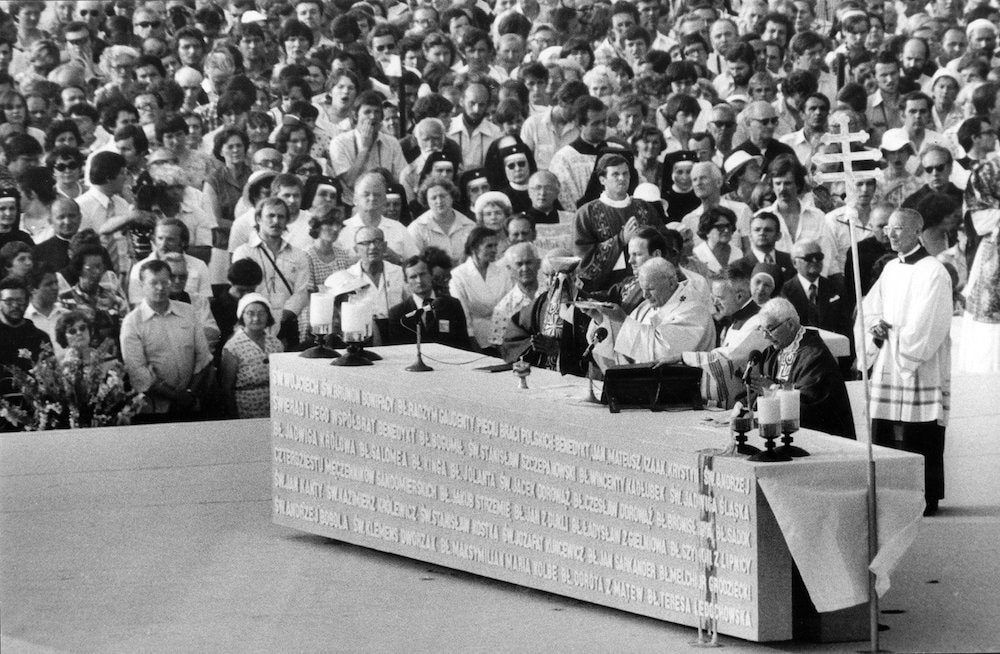
Among the most-quoted papal remarks in history are those from Victory Square in Warsaw: “Let your Spirit descend. Let your Spirit descend and renew the face of the earth, the face of this land,” St. John Paul said at Victory Square June 2, 1979, a homily that was seen as an encouragement to the nation to fight for its freedom and eventually creating the Solidarity trade union in August 1980 — a movement that led to the peaceful collapse of communism in Poland and the entire Soviet bloc in Europe.
During his reign, Pope St. John Paul (called “The Pilgrim Pope”) made 146 pastoral visits within Italy and 104 foreign trips, more than all previous popes combined. In total, he traveled more than 1,167,000 km (725,000 miles). One of the most significant moments of his papal trips were World Youth Days and countless other meetings with youth.
“He reenergized the church,” Weigel said. “Nobody thought this was possible. You know, a million young people gathered around the pope to learn and pray. People said: ‘You’re crazy. This cannot possibly happen.’ It’s now part of the regular rhythm of Catholic life.”
Inspiring vocations
For Weigel, St. John Paul played a pivotal role in thousands of vocations across the globe, which World Youth Days was an important part of.
“I can’t speak for situations elsewhere, but in the United States, I would say every priest, virtually every priest ordained between the mid-1980s and five years ago, when asked what attracted you to the priesthood, would say: ‘John Paul II.’ He was the greatest vocations director, the greatest vocation recruiter in the history of the church,” Weigel said.
Asked why St. John Paul was so effective in his mission, the pope’s biographer said that “he gave the church intellectual tools, intellectual materials with which to grapple with the huge problems of the late modern and postmodern world. Who are we as human beings? Where do we come from? What is our destiny? How ought we to live together? He grappled with the big questions and gave the church the materials with which to grapple with those far into the future,” he said.
Speaking about the second half of his papacy, marked with suffering after the May 13, 1981, assassination attempt and the pope’s health deteriorating heavily toward the end of 20th century, Weigel said the pope’s mission and his biggest challenge was clear: “to remind people about the excitement of the Gospel, that the gospel remains the most compelling, beautiful, energizing proposal about who we are and how we should live available in the world today.”
“And he understood that if we believed that, we would go out and help others to share in that,” he continued. “So if the first half of his pontificate was defined in large part by his role in the collapse of European communism, the second half of the pontificate was defined by his idea of the New Evangelization, that the church has to rediscover itself as a missionary enterprise in which every Catholic is baptized into a missionary vocation, and every place from your kitchen table to your neighborhood to your workplace is mission territory.”
John Paul II’s enduring legacy
That was not the way Catholics thought about missionary activity before, Weigel said. “But the living parts of the world church today are the ones that have embraced that challenge,” he said. There are, however, parts of the church that are dying, said Weigel.
“If you don’t believe that Jesus Christ is the unique Savior of the world and the unique exemplar of what an authentic humanity is, then you’re going to have a dying church. I mean, it all really goes back to that,” he said, giving European national churches such a German one as an example.
The longest reigning pope in modern history, the first non-Italian pope in 455 years, he wrote 14 encyclicals and walked Christianity into the third millennium. He promoted devotion to the Divine Mercy, became an ambassador of the poor and the sick of the world. In his later years, he suffered deeply and pushed himself to the limits of his physical capabilities, believing that suffering was part of his spiritual leadership as pontiff. He was the first pope to address sexual abuse crisis, which made waves especially by the end of his life and papacy.
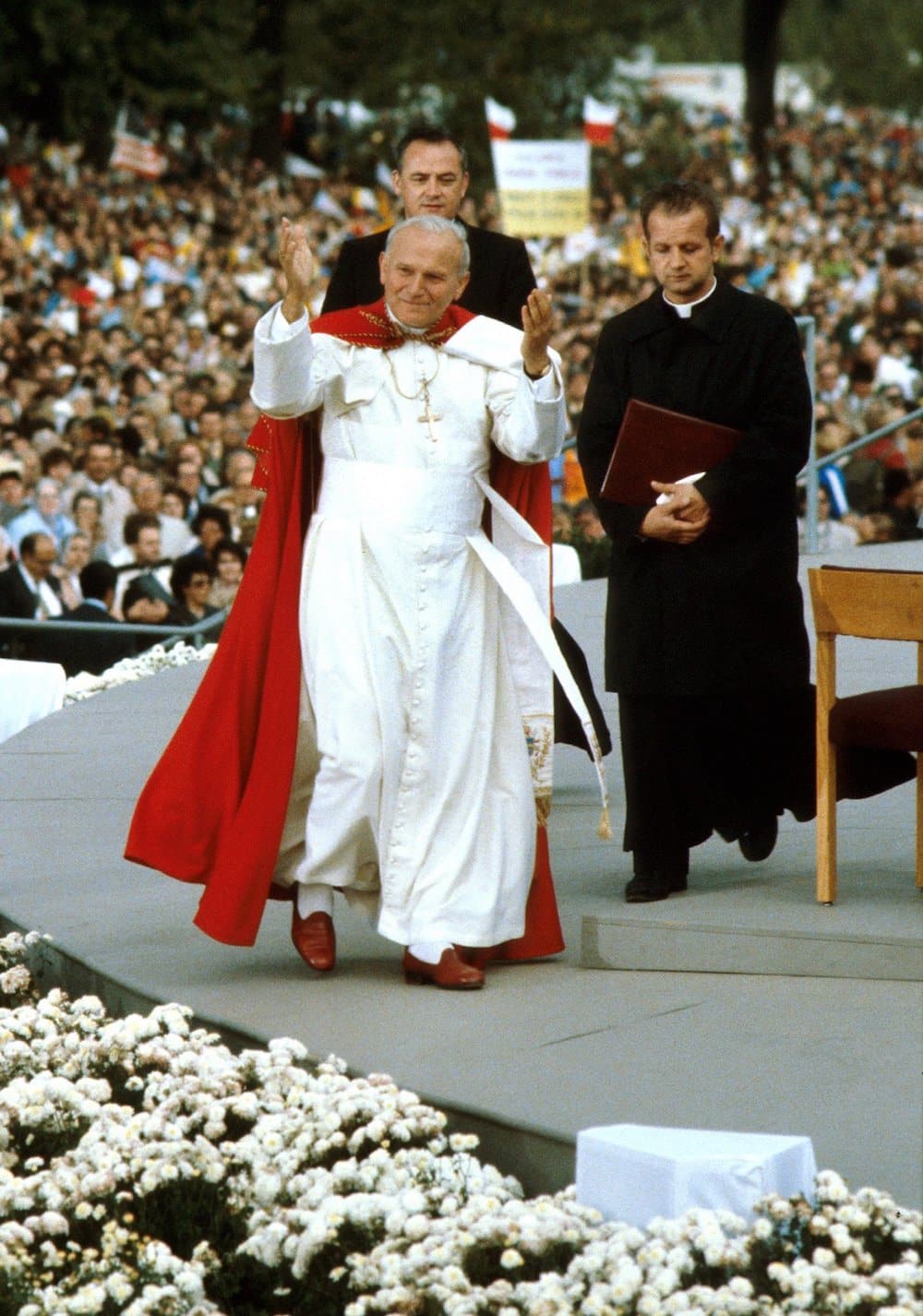
John Paul II officially inaugurated his papacy Oct. 22, 1978, with an address that instantly made history: “Brothers and sisters, do not be afraid to welcome Christ and accept his power,” he said at St. Peter’s Square. “Help the Pope and all those who wish to serve Christ and with Christ’s power to serve the human person and the whole of mankind.”
“Do not be afraid. Open wide the doors for Christ. To his saving power open the boundaries of States, economic and political systems, the vast fields of culture, civilization and development. Do not be afraid. Christ knows ‘what is in man.’ He alone knows it,” St. John Paul said.
“If you believe that Christianity is one religious myth, among others. … You’re not going to go out and make disciples of all nations, baptizing them in the name of the Father and of the Son and of the Holy Spirit. So the pope’s recentering the church on Christ, the person of Christ, which was a core teaching of the Second Vatican Council, I think is perhaps his most enduring legacy to the church,” Weigel said.

